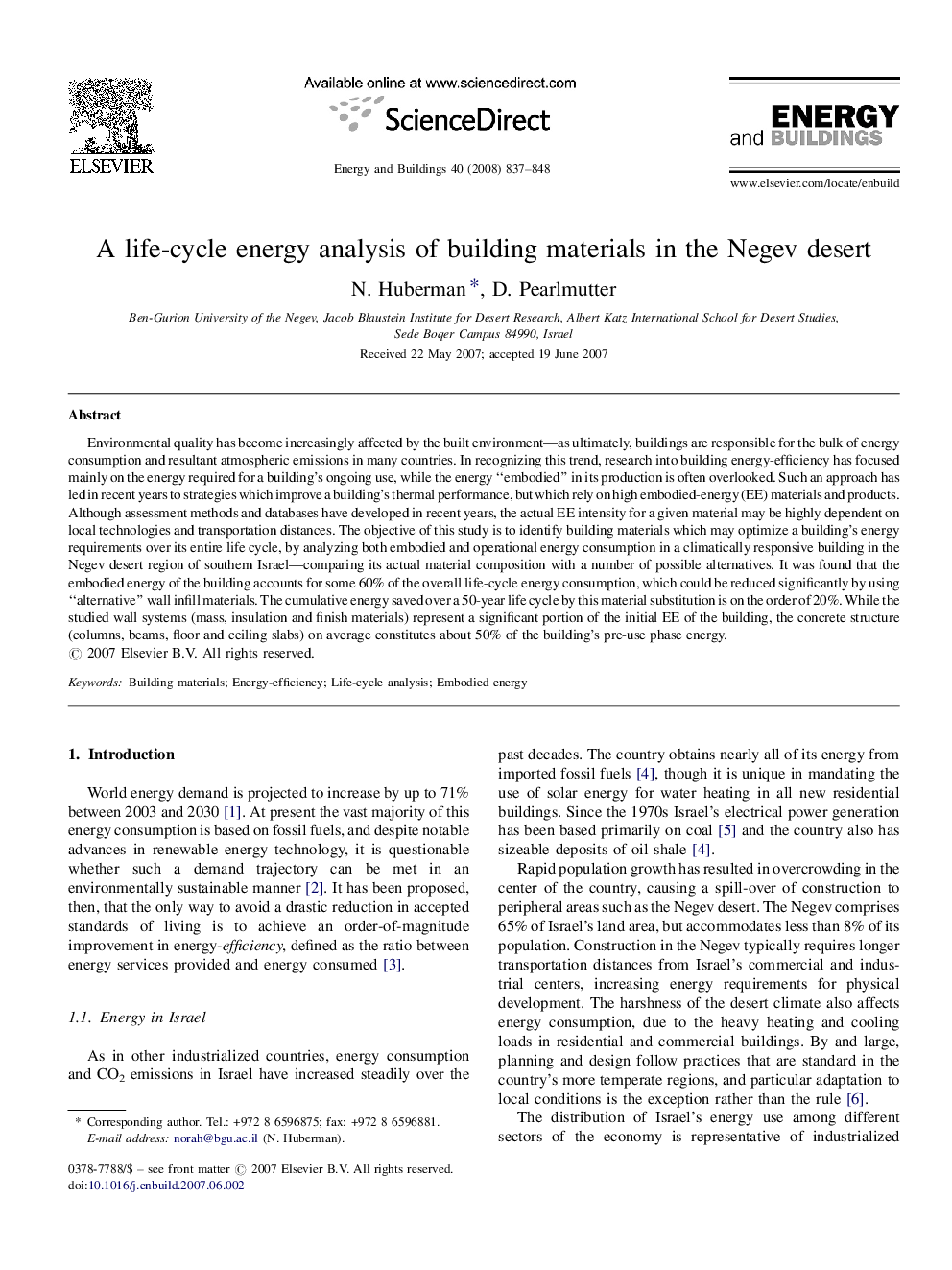| کد مقاله | کد نشریه | سال انتشار | مقاله انگلیسی | نسخه تمام متن |
|---|---|---|---|---|
| 265548 | 504170 | 2008 | 12 صفحه PDF | دانلود رایگان |

Environmental quality has become increasingly affected by the built environment—as ultimately, buildings are responsible for the bulk of energy consumption and resultant atmospheric emissions in many countries. In recognizing this trend, research into building energy-efficiency has focused mainly on the energy required for a building's ongoing use, while the energy “embodied” in its production is often overlooked. Such an approach has led in recent years to strategies which improve a building's thermal performance, but which rely on high embodied-energy (EE) materials and products. Although assessment methods and databases have developed in recent years, the actual EE intensity for a given material may be highly dependent on local technologies and transportation distances. The objective of this study is to identify building materials which may optimize a building's energy requirements over its entire life cycle, by analyzing both embodied and operational energy consumption in a climatically responsive building in the Negev desert region of southern Israel—comparing its actual material composition with a number of possible alternatives. It was found that the embodied energy of the building accounts for some 60% of the overall life-cycle energy consumption, which could be reduced significantly by using “alternative” wall infill materials. The cumulative energy saved over a 50-year life cycle by this material substitution is on the order of 20%. While the studied wall systems (mass, insulation and finish materials) represent a significant portion of the initial EE of the building, the concrete structure (columns, beams, floor and ceiling slabs) on average constitutes about 50% of the building's pre-use phase energy.
Journal: Energy and Buildings - Volume 40, Issue 5, 2008, Pages 837–848